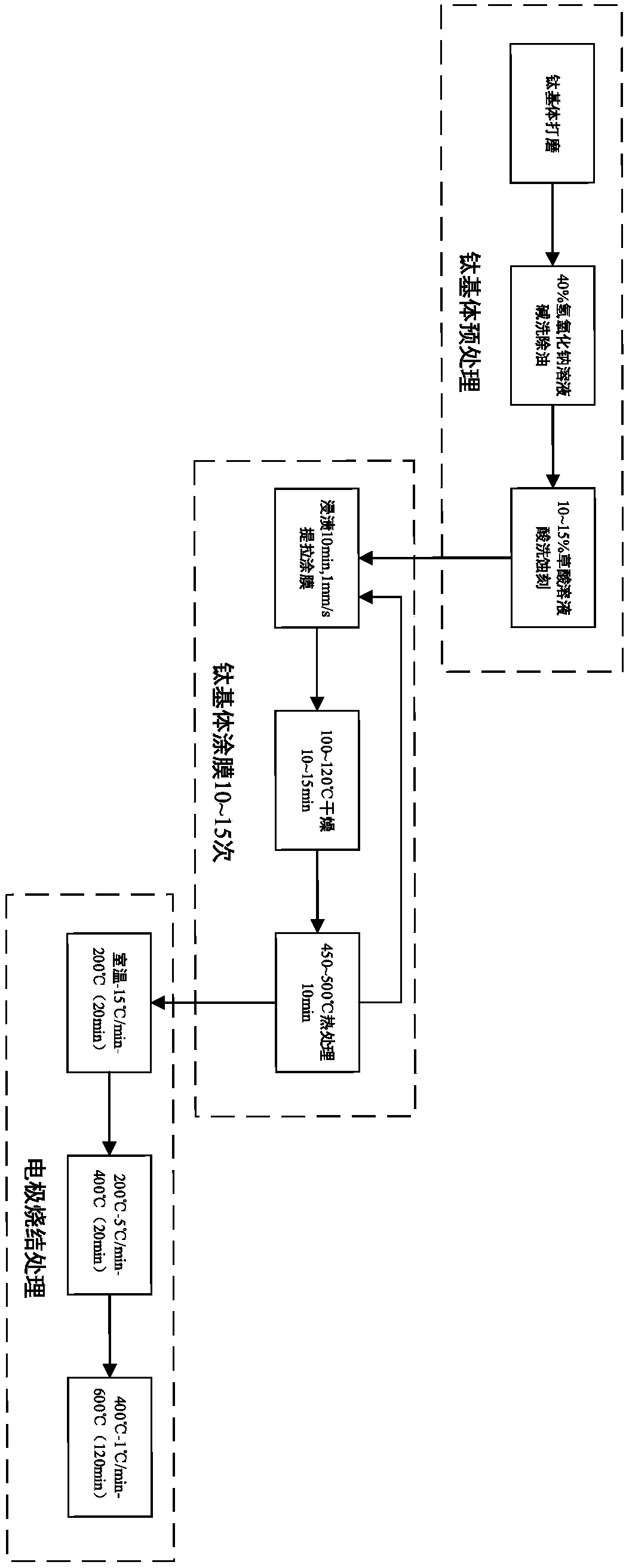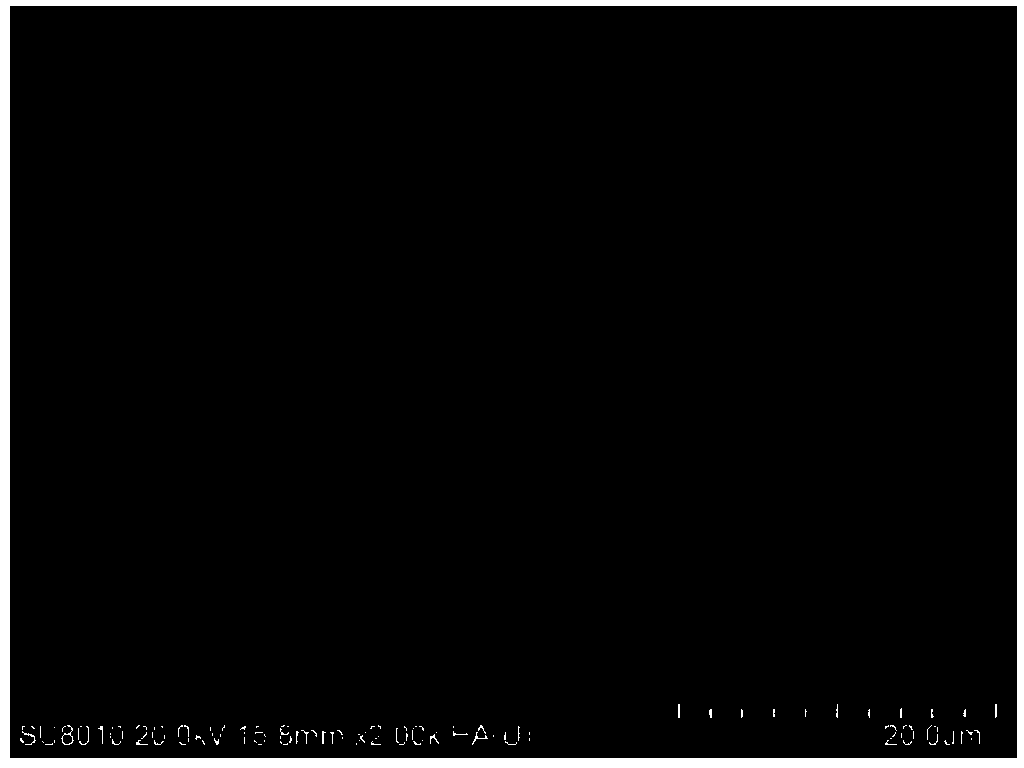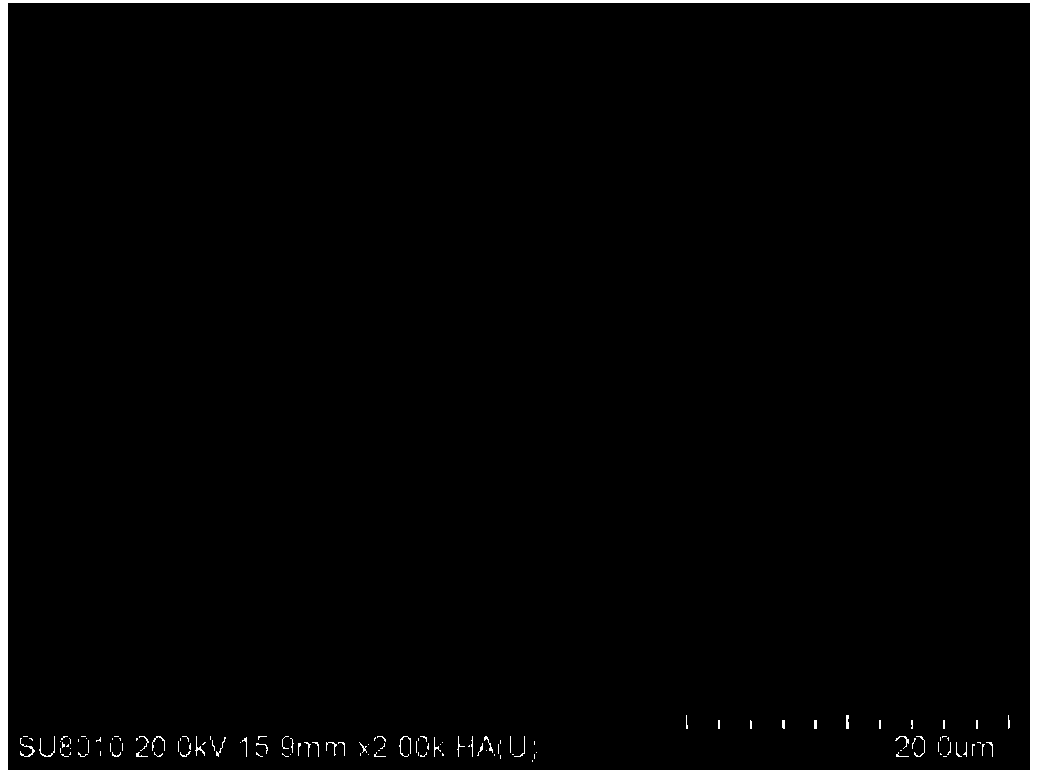Preparation method for molybdenum-antimony co-doped titanium-based stannic oxide electrocatalysis electrode
A tin dioxide and co-doping technology, applied in the direction of sterilization/microdynamic water/sewage treatment, etc., can solve the problem of high price, and achieve the effects of thorough treatment, simple and controllable preparation method, and easy large-scale electrode preparation.
- Summary
- Abstract
- Description
- Claims
- Application Information
AI Technical Summary
Problems solved by technology
Method used
Image
Examples
preparation example Construction
[0033] The invention is a preparation method of a novel molybdenum and antimony co-doped titanium-based tin dioxide electrocatalytic electrode, such as figure 1 As shown, the method steps are as follows:
[0034] (1) Pretreatment of the titanium substrate: the titanium substrate is polished with 120# and 240# water-resistant sandpaper, and then washed with a mass concentration of 40% NaOH solution at 80°C for 1 hour to remove oil, and then cleaned with a mass concentration of 10~15 % oxalic acid solution was etched in a slightly boiling state for 1 h, washed with distilled water and stored in ultrapure water.
[0035] (2) Preparation of sol: using ethanol as the solvent, the atomic molar ratio of Sn, Sb, and Mo is 100:3:1~3, and the source of the above elements is SnCl 4 · 5H 2 O, Sb 2 o 3 , (NH 4 ) 6 Mo 7 o 24 and other raw materials, add complexing agent citric acid and ethylene glycol, wherein the molar ratio of metal ion, citric acid and ethylene glycol is 1:3:3; m...
Embodiment 1
[0041] A method for preparing a novel molybdenum and antimony co-doped titanium-based tin dioxide electrocatalytic electrode, the steps are as follows:
[0042] (1) Pretreatment of the titanium substrate: the titanium substrate is polished with 120# and 240# water-resistant sandpaper, and then degreased with 40% NaOH solution at 80°C for 1 hour, and then etched with 10% oxalic acid solution in a slightly boiling state 1h, washed with distilled water and stored in ultrapure water.
[0043] (2) Preparation of sol: use ethanol as the solvent, the atomic molar ratio of Sn, Sb, and Mo is 100:3:1, and the source of the above elements is SnCl 4 · 5H 2 O, Sb 2 o 3 , (NH 4 ) 6 Mo 7 o 24 and other raw materials, adding complexing agent citric acid and ethylene glycol, wherein the molar ratio of metal ions, citric acid and ethylene glycol is 1:3:3. After the raw materials are completely dissolved, fully stir in a 60°C water bath for 1 hour, and then stand and age in a 60°C water ...
Embodiment 2
[0047] A method for preparing a novel molybdenum and antimony co-doped titanium-based tin dioxide electrocatalytic electrode, the steps are as follows:
[0048] (1) Pretreatment of the titanium substrate: the titanium substrate is polished with 120# and 240# water-resistant sandpaper, and then degreased with 40% NaOH solution at 80°C for 1 hour, and then etched with 15% oxalic acid solution in a slightly boiling state 1h, washed with distilled water and stored in ultrapure water.
[0049] (2) Preparation of sol: use ethanol as the solvent, the atomic molar ratio of Sn, Sb, and Mo is 100:3:2, and the source of the above elements is SnCl 4 · 5H 2 O, Sb 2 o 3 , (NH 4 ) 6 Mo 7 o 24 and other raw materials, adding complexing agent citric acid and ethylene glycol, wherein the molar ratio of metal ions, citric acid and ethylene glycol is 1:3:3. After the raw materials are completely dissolved, fully stir in a 60°C water bath for 1 hour, and then stand and age in a 60°C water ...
PUM
 Login to View More
Login to View More Abstract
Description
Claims
Application Information
 Login to View More
Login to View More - R&D
- Intellectual Property
- Life Sciences
- Materials
- Tech Scout
- Unparalleled Data Quality
- Higher Quality Content
- 60% Fewer Hallucinations
Browse by: Latest US Patents, China's latest patents, Technical Efficacy Thesaurus, Application Domain, Technology Topic, Popular Technical Reports.
© 2025 PatSnap. All rights reserved.Legal|Privacy policy|Modern Slavery Act Transparency Statement|Sitemap|About US| Contact US: help@patsnap.com



